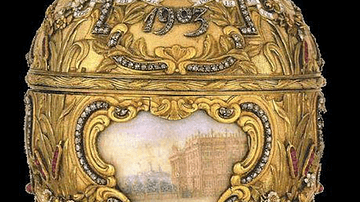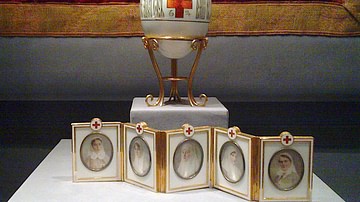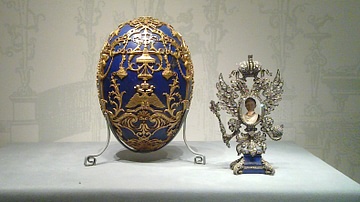Illustration
The 1898 Imperial Pelican Egg by Peter Carl Fabergé (1846-1920). The egg was given by Tsar Nicholas II (r. 1894-1917) to his mother the Dowager Empress Marie Feodorovna. It commemorates the 100th anniversary of the charitable institutions the dowager supported. The egg is made of engraved red gold with extra decoration rendered using diamonds and pearls. The top of the egg is decorated with an enamel pelican, a traditional symbol of maternal care. The surprise inside, which is attached to the pelican, has eight interconnected oval miniature paintings by the Danish artist Johannes Zehngraf. The paintings show some of the charitable institutions the dowager supported. The egg measures 10.2 cm (4 in) in height.
Virginia Museum of Fine Arts, Richmond, USA.
Cite This Work
APA Style
Redden, C. (2021, May 03). Imperial Pelican Egg by Fabergé. World History Encyclopedia. Retrieved from https://www.worldhistory.org/image/13961/imperial-pelican-egg-by-faberge/
Chicago Style
Redden, Chuck. "Imperial Pelican Egg by Fabergé." World History Encyclopedia. Last modified May 03, 2021. https://www.worldhistory.org/image/13961/imperial-pelican-egg-by-faberge/.
MLA Style
Redden, Chuck. "Imperial Pelican Egg by Fabergé." World History Encyclopedia. World History Encyclopedia, 03 May 2021, https://www.worldhistory.org/image/13961/imperial-pelican-egg-by-faberge/. Web. 25 Apr 2025.







